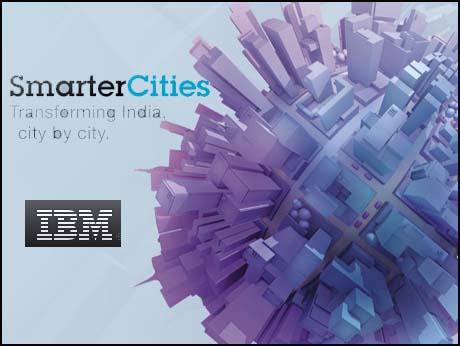
Gurgaon (Haryana), September 12 2012: Non ideological long term thinking in systems was the only way to address the global movement of population to cities – a trend which in India alone sees 30 migrating to urban centres, every minute—feels IBM’s Chairman and CEO, Sam Palmisano.
With seventy percent of the world’s population likely to live in cities by 2050, the challenge was significant – but surmountable, he added, in the opening keynote at the Smarter Cities conference, hosted here today, by the US-based technology giant. With 250 leaders from 28 cities and 12 industries in attendance, IBM sent out an upbeat message – holding up technology as the agni asthtra or secret weapon that might help turn infrastructure –challenged cities into the smart cities of the future.
Saying in effect, if we could do it so can you, was Sergio Guimaraes Ferreira, Information Director of Rio de Janeiro, Brazil, a city that has become a showcase of what a combo of technology and centralized planning could achieve in addressing the Usual Suspects among urban challenges – transportation, energy, safety, water and habitation.
Shanker Annaswamy, Managing Director, IBM India/South Asia said, “Together we hope to explore possibilities of creating an enabling environment for our cities in India to better manage planning, infrastructure and citizen services – and go beyond technology and talk about innovative vision, leadership and collaboration – the 3 things that are essential to transforming cities in India.”
Bhupinder Singh Hooda, Chief Minister of the host state – Haryana – pointed to his government’s success in harnessing a public –private-partnership model to fast track projects like a rapid metro rail for the showcase city of Gurgaon – North India’s largest agglomeration of high tech companies.
Another success story that held out valuable lessons for India, was Singapore’s Land Transport Authority – and Silvester Prakasam – the father of LTA’s integrated Fare Systems, across all public transport systems in the island state was on hand to share his experience and that of his department in creating a cost effective urban transportation system that is a benchmark for city planners.
A case study of Australia’s successful transformation of the public utility network by AusNet also proved relevant for Indian planners. While almost all the projects showcased, had some input from IBM, the company chose to play down its own role and let the success stories tell the real story.
See our picture feature in our Image of the Day spot . http://www.indiatechonline.com/viewimage.php?id=416
India TechOnline will highlight other technology highlights of the conference and carry interview stories in separate reports, over the next few days.
From Anand Parthasarathy in Gurgaon.